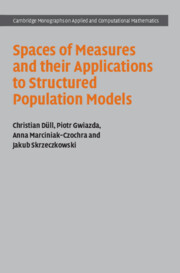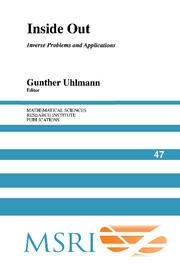Spaces of Measures and their Applications to Structured Population Models
Structured population models are transport-type equations often applied to describe evolution of heterogeneous populations of biological cells, animals or humans, including phenomena such as crowd dynamics or pedestrian flows. This book introduces the mathematical underpinnings of these applications, providing a comprehensive analytical framework for structured population models in spaces of Radon measures. The unified approach allows for the study of transport processes on structures that are not vector spaces (such as traffic flow on graphs) and enables the analysis of the numerical algorithms used in applications. Presenting a coherent account of over a decade of research in the area, the text includes appendices outlining the necessary background material and discusses current trends in the theory, enabling graduate students to jump quickly into research.
- Includes appendices providing any necessary background material and collects results from various fields in one place
- Covers results concerning the functional analytic properties of spaces of measures, previously scattered over many papers using different notations
- Presents current trends and problems in the theory, allowing young researchers to jump quickly into research
Product details
No date availableAdobe eBook Reader
9781009020473
0 pages
Table of Contents
- Notation
- Introduction
- 1. Analytical setting
- 2. Structured population models on state space R+
- 3. Structured population models on proper spaces
- 4. Numerical methods for structured population models
- 5. Recent developments and future perspectives
- Appendix A. Topology, compactness and proper spaces
- Appendix B. Functional analysis
- Appendix C. Bounded Lipschitz and Hölder functions
- Appendix D. Results on approximation with polynomials
- Appendix E. Differential geometry
- Appendix F. Measure theory
- Appendix G. Weaker topologies on spaces of measures
- Appendix H. The Bochner integral
- Appendix I. Semigroups
- Appendix J. Supplement to Chapter 2
- Appendix K. Technical proofs from Chapter 3
- References
- Index.







